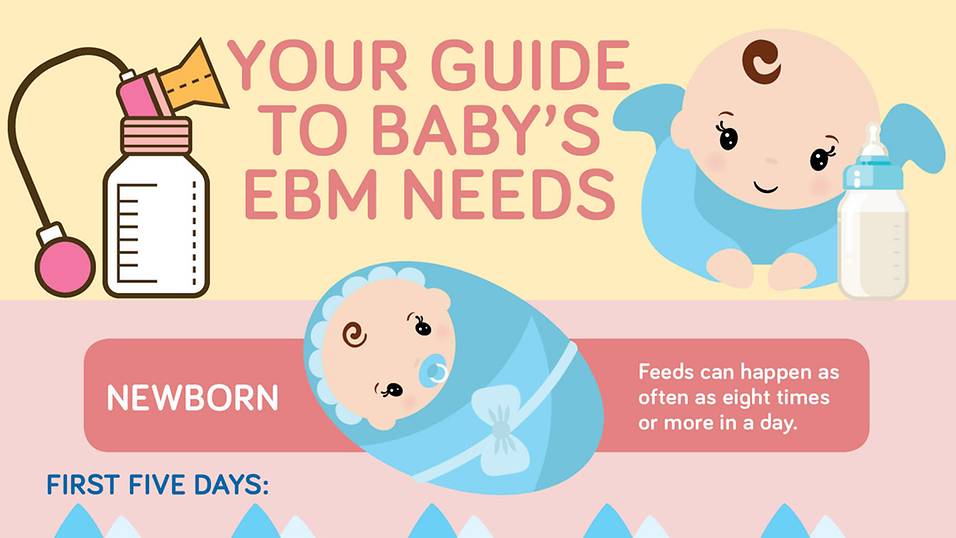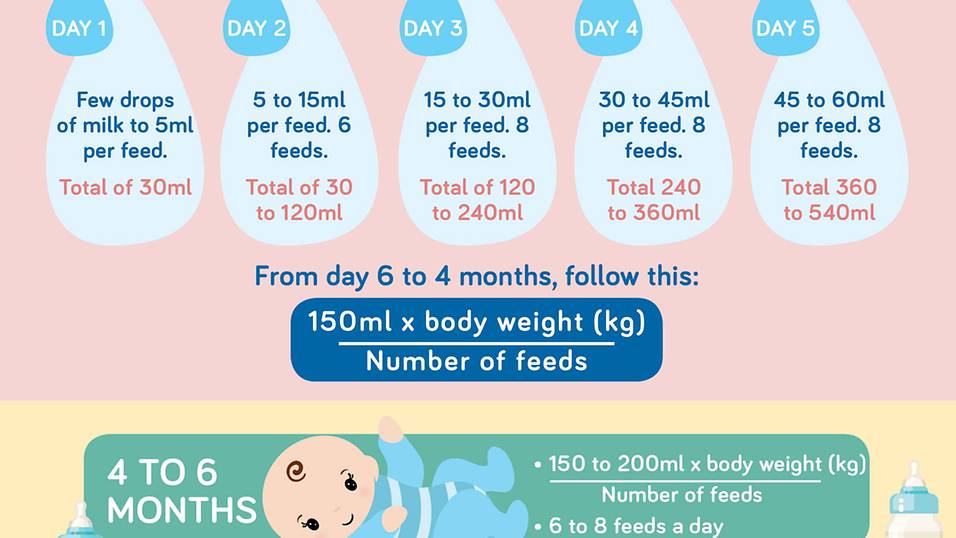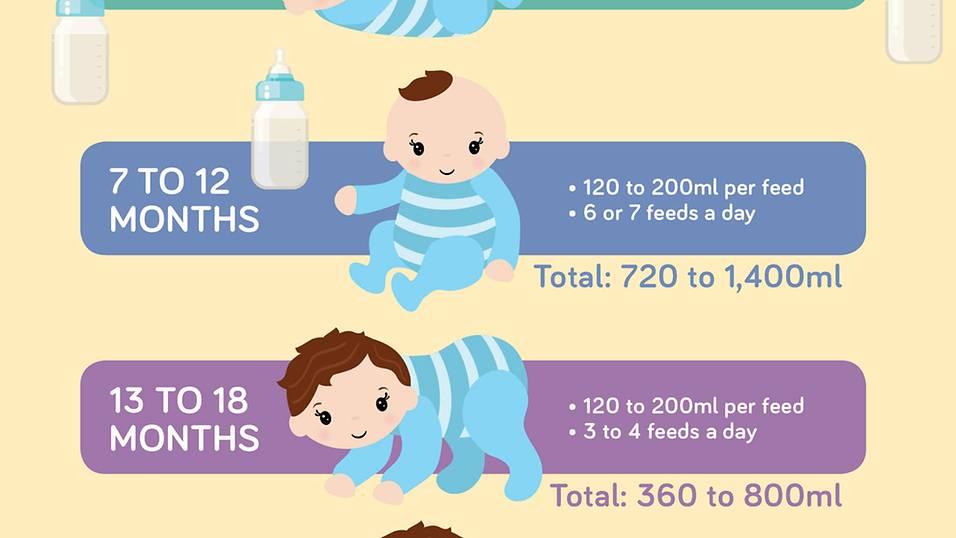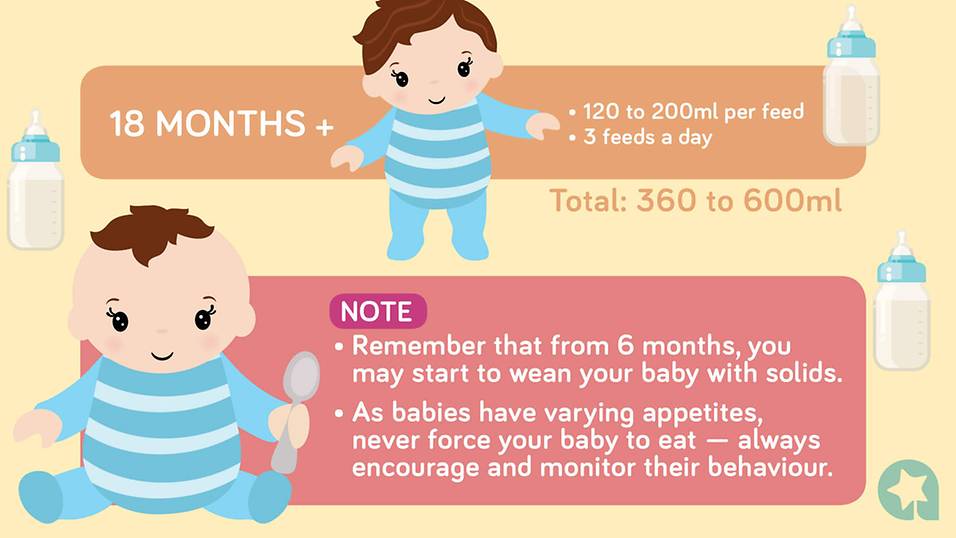Expressing is how you can offer baby your breastmilk without him needing to suckle. Here’s how much he’ll need…
![How much breastmilk should baby take? [Infographic]](/sites/default/files/babies-how-much-breastmilk-should-baby-take-1_2.jpg)
Breastfeeding is a milestone many mothers look forward to. They are excited to offer sustenance for their babies containing all the vitamins and nutrients they’ll need, especially since breastmilk is packed with disease-fighting substances that’ll protect bubba from illness.
Yet, inexperienced new mums might find getting the right latch challenging. Besides causing feeding problems for bubba, a shallow latch will cause skin damage around the nipple and result in sore nipples.
The team at Thomson Parentcraft Centre explain, “If simple sore nipples are not managed effectively, it can lead to breast infection like mastitis and even, in severe cases, breast abscess.” Other times, issues like a tongue-tie or a cleft lip or palate can make it difficult for bubba to suckle.
Expressing milk means that your baby can carry on enjoying your “liquid gold” while someone else is caring for her.
Pumping and storing your expressed breastmilk (EBM) for a cup-, syringe, finger-feed or a nursing supplementary system is a good option if a direct latch is proving too challenging. If you express your milk, your baby can still have the benefits of breastmilk if they are not able to nurse.
There may be times when you need to be away from your baby, because you have returned to work or even if it’s just a few hours. Expressing milk means that your baby can carry on enjoying your “liquid gold” while someone else is caring for her
Your Guide to Baby’s EBM Needs
Newborns
Feeds can happen as often as 8 times or more in a day. Here is the recommended amount for the first five days:
- Day 1: Few drops of milk to 5ml (0.169oz) per feed. Total of 30ml (1oz)
- Day 2: 5 to 15ml (0.169 to 0.5oz) per feed. 6 feeds. Total of 30 to 120 ml (1 to 4oz).
- Day 3: 15 to 30ml (0.5 to 1oz) per feed. 8 feeds. Total of 120 to 240ml (4 to 8oz).
- Day 4: 30 to 45ml (1 to 1.5oz) per feed. 8 feeds. Total 240 to 360ml (8 to 12oz).
- Day 5: 45 to 60ml (1.5 to 2oz) per feed. 8 feeds. Total 360 to 540ml (12 to 18oz).
- From day 6 to 4 months, follow this formula: (150ml(5oz) x body weight (kg) ) / ( number of feeds)
4 to 6 months:
(150 to 200ml (5 to 7oz) x body weight ) / (number of feeds). 6 to 8 feeds a day.
7 to 12 months:
120 to 200ml (4 to 7oz) per feed. 6 or 7 feeds a day. Total of 720 to 1,400 ml (24 to 47oz).
13 to 18 months:
120 to 200ml (4 to 7oz) per feed. 3 to 4 feeds a day. Total of 360 to 800ml (12 to 27oz).
18 months +:
120 to 200ml (4 to 7oz) per feed. 3 feeds a day. Total of 360 to 600ml (12 to 20oz).
What to note: Remember that from 6 months, you may start to wean your baby with solids. As babies have varying appetites, never force your baby to eat. Always encourage and monitor their behaviour.
The team at Thomson Parentcraft Centre, who notes that offering EBM lets you track how much your kewpie is consuming, shares how much milk you'll need to pump or feed your baby…
How do I know if baby’s getting enough milk?
If you are breastfeeding your child directly, your baby will stop suckling when he’s full. If your baby were to fall asleep while feeding halfway, wake the baby up by burping and gently stretching his arms or legs. This always works to get the baby back to suckling. Exclusively breastfed babies will normally show signs that they are growing well and have an adequate levels of pee and poo. In addition, the colour and consistency of a baby’s poo will show if the baby is fed enough. After delivery, babies will normally gain 20 to 30g per day of body weight during the initial 10 days and they also tend to settle well after a good feed and are less fussy.
Is it possible to overfeed my baby?
By nature, baby will indicate or stop feeding because your breast milk has leptin — a hormone that regulates appetite, food intake and energy metabolism. Leptin is produced mainly by the adipose (fatty) tissue, which varies between individuals.
“As a last resort, you can take supplements that include milk enhancing herbs like fenugreek or medication like motilium.”
How can I increase my milk supply?
Pumping immediately after direct deep latch for 15 minutes on stimulation mode may help. You should also monitor and ensure you position baby’s mouth to your breast accurately during feeding to ensure baby is able to get the milk effectively and adequately. You should listen out for swallowing sounds when baby is suckling. Otherwise, gently massaging your breasts before latching may also be effective.
There are also lifestyle choices to consider. Make sure you are relaxed or well-rested and avoid doing too much. Stick to a balanced diet with an adequate fluid intake. Also, ensure that you avoid complications like breast engorgement or infections like mastitis and breast abscesses. As a last resort, you can take supplements that include milk-enhancing herbs like fenugreek or medication like motilium.
Managing Milk Supply
How many times should I pump to increase milk supply?
As a guide, ensure you are pumping at least 8 times a day. You may also choose to add an evening or early morning pumping session. Double pumping can also help to yield more milk and decrease the amount of time you spend pumping. Pumping after nursing may be beneficial in helping boost milk supply over time as well.
What foods decrease milk supply?
Foods and beverages that may adversely affect milk supply include alcohol, which may inhibit one’s milk ejection (let down) reflex. This makes it harder for your baby to obtain your milk, and may decrease milk supply over time. When consumed in large doses, certain herbs such as sage and peppermint are also linked to a decrease in milk supply. Try to steer clear of large amounts of parsley, oregano, jasmine, and yarrow too. Large amounts of caffeine can dehydrate your body and lower breast milk production too – so keep it to one or two cups of coffee a day.
How long does it take for breastmilk to fill back up? How often should I pump?
It’s important to realise that breastmilk is being produced at all times, so your breasts are never really empty. Babies don’t consume all milk available from the breast − the amount averages around 75 to 80% of your available milk. Also, the more frequently milk is taken from the breasts, the faster they refill.
However, there is a stage where the flow of milk slows down to the extent that no significant amount of milk can be expressed. It then takes around 20 to 30 minutes for the breast to “fill up” again, so that milk flow speeds up.
Does baby get more milk nursing than through the pump?
It isn’t always true that babies get more milk through nursing than pumping. In fact, babies may take more milk from the bottle than breast, as the fast and consistent flow of the bottle makes overfeeding more likely. As for nursing, the process may start out slow then flow faster once the milk lets down.
If your baby has at least 6 wet diapers a day, regular bowel movements and good weight gain, you are likely meeting their feeding needs – whether or not you pump or breastfeed.
Can I just pump and not breastfeed? Which is better, pumping or nursing?
Both pumping and breastfeeding have their benefits, so neither is better than the other. It all depends on your preferences and circumstances.
For example, some have to pump from the beginning if their baby is unable to latch. Others can only breastfeed, particularly if their baby refuses the bottle. The benefits of breastfeeding include a more continuous milk supply, convenience, affordability and bonding time with baby. However, pumping also has its perks such as control over timing, more breaks between feedings and the ability to split feeding duties.
For more helpful information about breastfeeding, download Thomson Medical’s Guide to Successful Breastfeeding Booklet.
Infographic: Rachel Lim




Main photo: iStock
In case you missed these reads...
MUM SAYS I suffer from mummy guilt